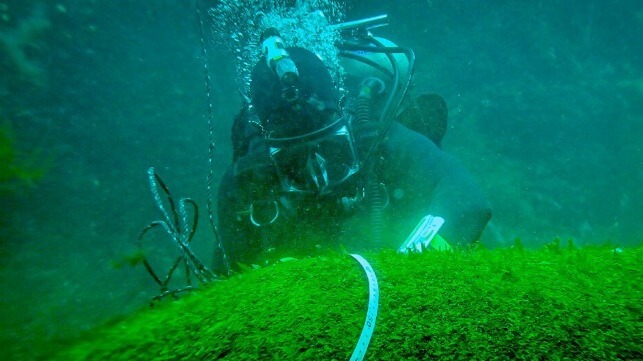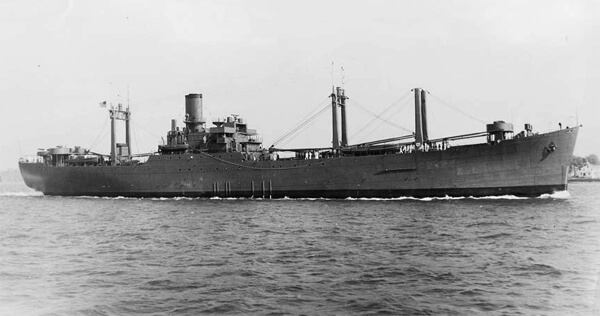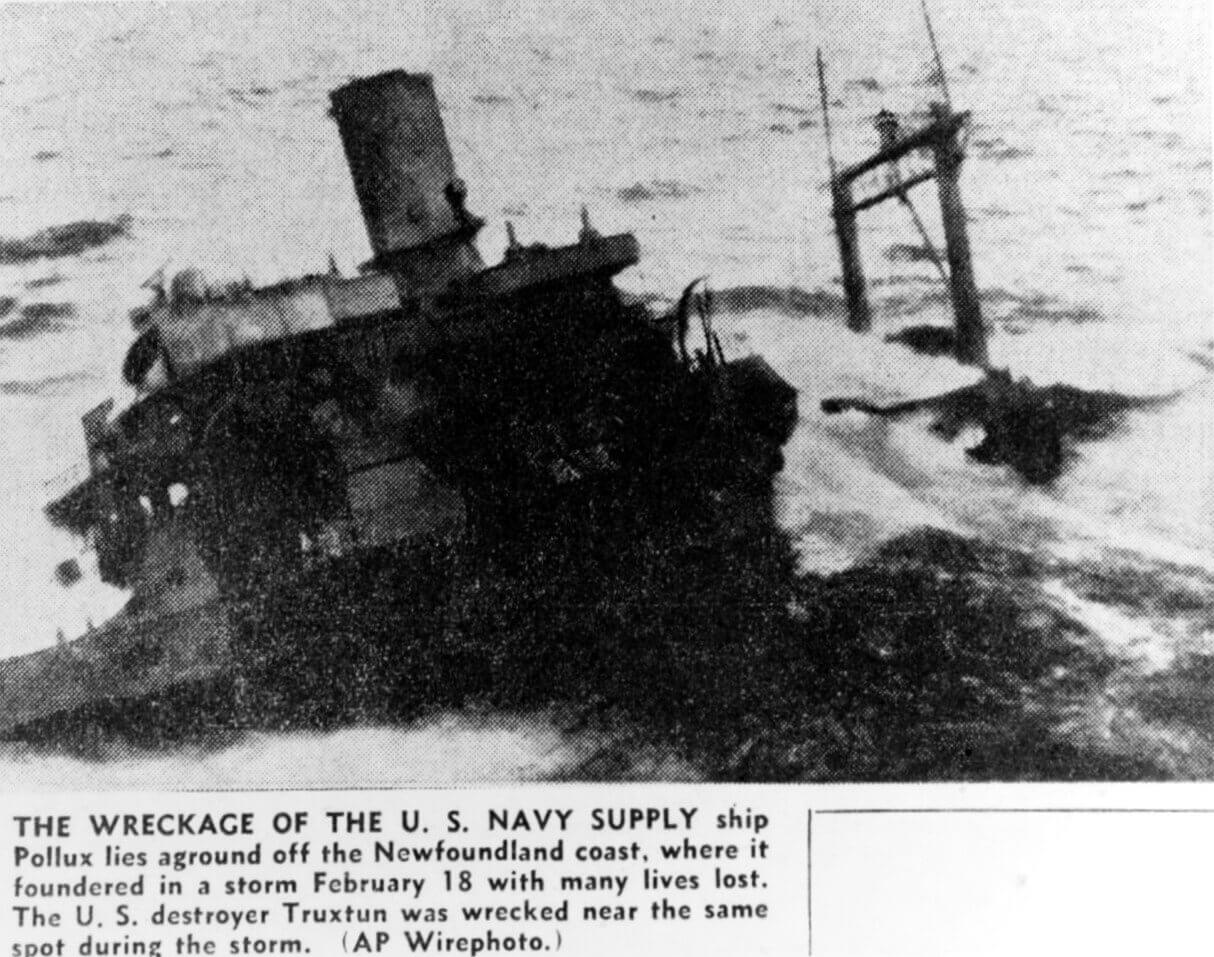Canadian Divers Find WWII Bombs on US Shipwrecks Off Newfoundland Coast

Divers from the Royal Canadian Navy are conducting underwater surveys looking for potential risks among old shipwrecks. On Thursday they reported that they have located more than a dozen 227 kg bombs and numerous artillery projectiles among the wreckage of two U.S. ships lost off the coast of Newfound 81 years ago. Depending on their findings, the RCN says subsequent operations may be required.
In their latest mission, Maritime Explosive Ordnance Disposal Divers from the Fleet Diving Unit (Atlantic), alongside Port Inspection Divers from HMCS Cabot, the land-based training unit in St. John’s, Newfoundland and Labrador, were sent to survey the wrecks from two WWII-era U.S. vessels. The Navy was aware that the two vessels, the USS Pollux and the USS Truxtun, were loaded with WWII ordnance. The divers mission was to survey the underwater debris to determine what remains after all these years.

USS Pollux commissioned in 1941 (U.S. Naval Historical Center photo)

Built in 1919, USS Truxtun was on convoy duty between Canada and Iceland in 1941 and 1942 (U.S. Naval Historical Center photo)
The USS Pollux was a 7,350 dwt small cargo ship measuring 459 feet in length and with a crew of 199 that the U.S. Navy had taken over while under construction and commissioned to transport war supplies. Placed in service in 1941, the vessel was assigned to a convoy that was assembling off the coast of Newfound in February 1942. Among the other ships was a destroyer, the USS Wilkes, and another 1919-vintage destroyer, the USS Truxtun, that were providing convoy escorts. The USS Truxtun (1,215 dwt) measured 315 feet and had a complement of 122, and had for months been running convoys back and forth between Canada and Iceland.
The vessels were in Placentia Bay, Newfoundland, when on the night of February 18, 1942, what has been described as a “howling Atlantic gale" overtook the area. Shortly after 4:00 a.m., the Pollux grounded at Chambers Cove and despite the efforts of her commander, the vessel began going down and ultimately broke up on the rocks. A similar fate struck the USS Truxtun which broke apart on the rocks that night. Residents of the area rushed to the scene attempting to help but 93 from the Pollux died in the icy Atlantic waters and fierce storm while 110 were lost from the Truxtun. The Wilkes also was damaged, but was able to free herself and survived the storm.

“A comprehensive examination is ongoing to assess the presence and potential risk of explosive materials. Safety is our paramount concern - we spare no effort in our mission to safeguard the public,” writes the RCN reporting on the results of their mission.
They said the passage of time, and the relentless corrosion from decades of saltwater exposure has left the bombs and projectiles “fragmented and weather-beaten.”
The Royal Canadian Navy will be continuing to survey wreck sites and said there will be further updates as “we navigate through history to secure our present.”
Disposal of ordinance and munitions at sea was prohibited 50 years ago. However, divers continue to find various examples on the sea floor. Just this week, a spokesperson for the U.S. Navy confirmed to WPBF News in Fort Pierce, Florida that the Navy Explosive Ordinance Disposal Dive Team had taken the lead in the disposal of a WWII-era mortar discovered about 75 feet offshore in about nine feet of water. A diver reported finding the shell to the U.S. Coast Guard while in the water off a popular local beach.
